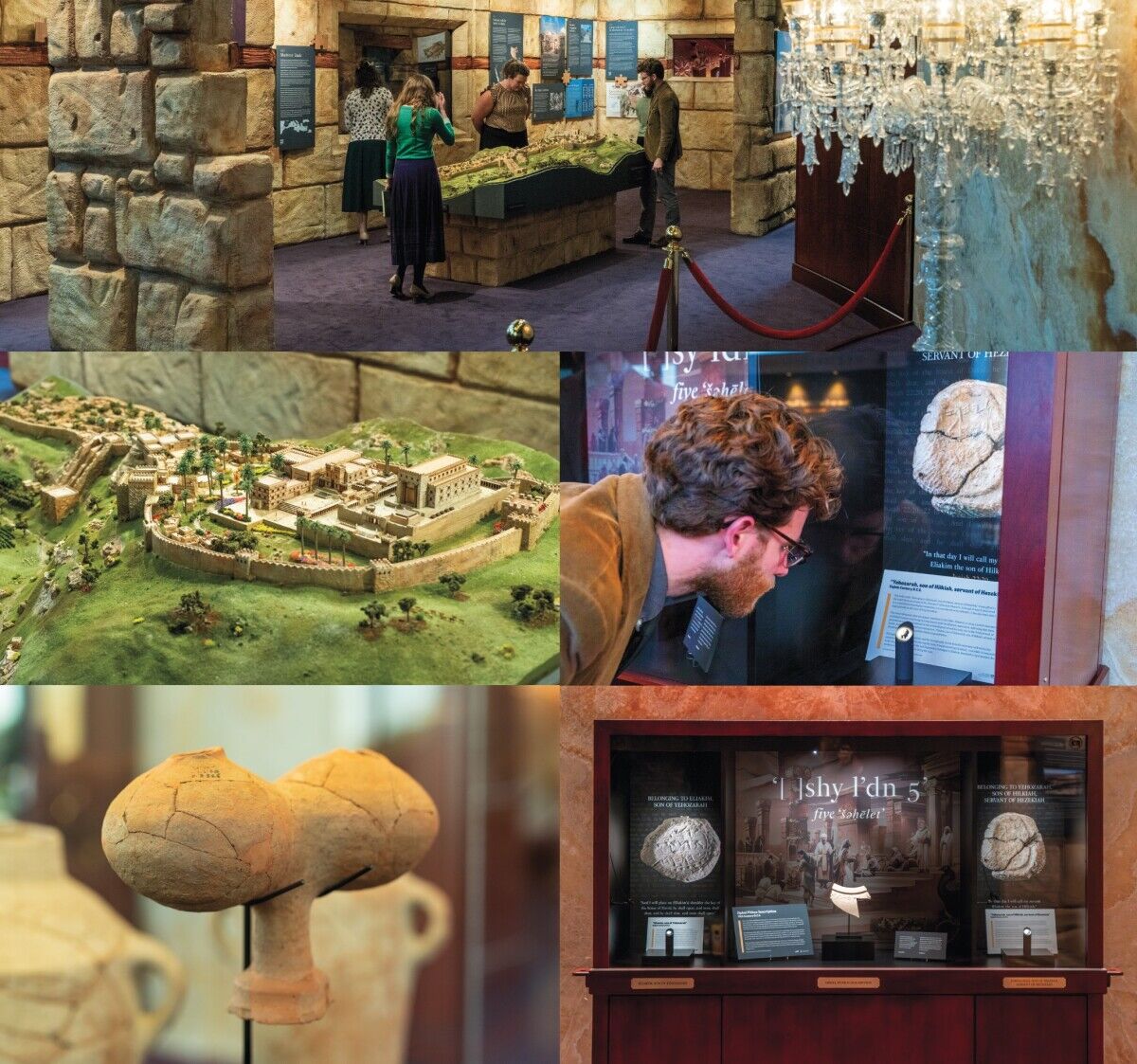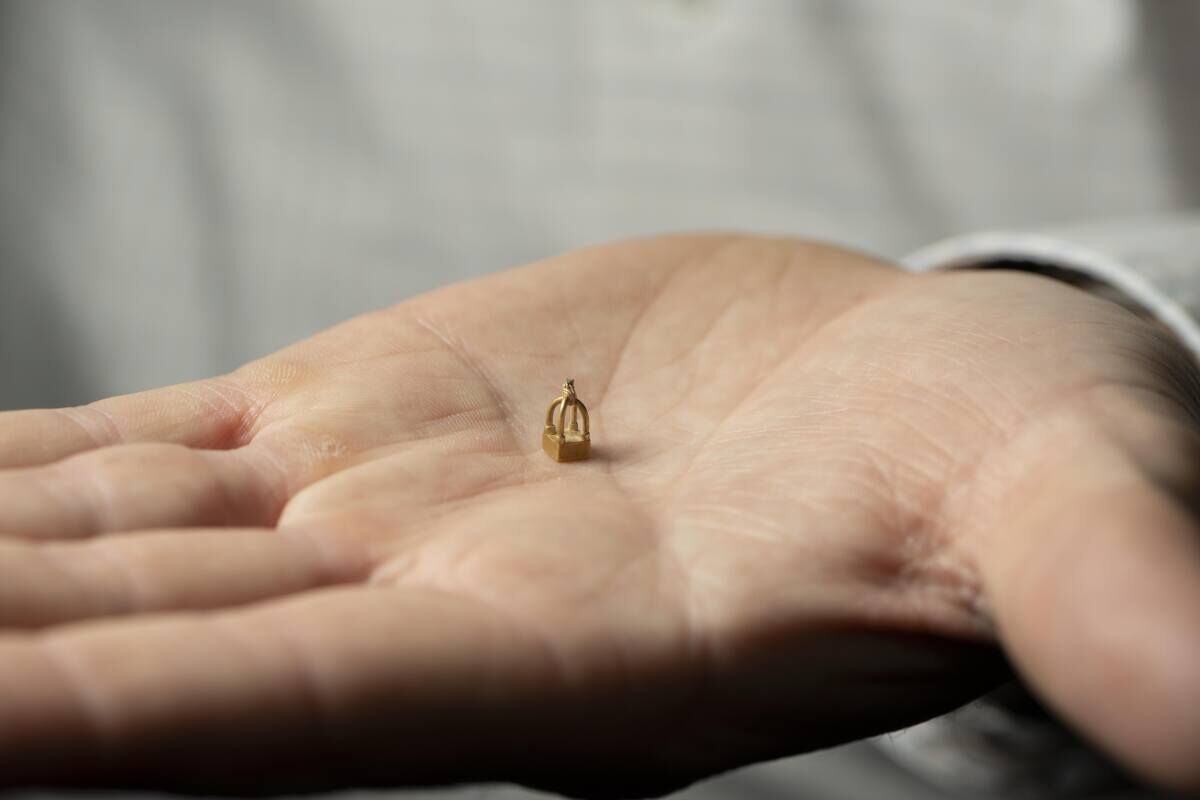He was Israel’s greatest king. He unified a divided nation and expanded Israel’s borders. He established Jerusalem as Israel’s monumental capital. He was the beginning of an unending dynasty.
King David left behind a remarkable and illustrious legacy. He established an impressive kingdom and then left his son Solomon an inheritance of peace and prosperity. The Bible describes the united kingdom of Israel as unmatched in wealth, power and influence.
But does archaeological, scientific and historical proof of the kingdom of David and Solomon exist? Our world premiere exhibit provides a thorough and detailed answer!
Showcasing over 40 artifacts from 10th-century b.c.e. biblical Israel, a tour of our exhibit—whether in person or virtual—will equip you with a detailed understanding of the kingdom of Israel at the time of David and Solomon.
It marks the world premiere of the Ophel Pithos Inscription and a selection of other artifacts discovered by Dr. Eilat Mazar on the Ophel and in the City of David. The exhibit also features elements of monumental Jerusalem, including a Phoenician-style capital discovered in Jerusalem.
Unearthed at archaeological sites across Israel, including Jerusalem, Timna, Lachish and Khirbet Qeiyafa, this unique collection of iron, pottery, stone and textiles is presented within a sensational exhibit featuring life-size monumental wall reconstructions, virtual-reality tours, video presentations and several original illustrations and artwork selections.
This exhibit is totally unique. It is the first time such a diverse collection of 10th-century archaeological finds have been collected in one place and presented in their broader scientific, historic and biblical context to reveal the monumental nature of the united monarchy during the reigns of kings David and Solomon.
“Up until 10 years ago, this exhibit would be impossible,” said exhibit assistant curator Brent Nagtegaal. “Most of the discoveries that are featured within the exhibit were unearthed within the last 10 to 15 years. This is new information that’s coming to the public that couldn’t have been done before.”
This free exhibit is presented and funded by the Armstrong Institute of Biblical Archaeology in association with the Armstrong International Cultural Foundation, the Institute of Archaeology of the Hebrew University of Jerusalem, the Israel Museum of Jerusalem and the Israel Antiquities Authority.
It is located in Edmond, Oklahoma, in the lobby of Armstrong Auditorium. The exhibit is open to the public through Jan. 17, 2025. Admission is free. You can also tour the exhibit online. To take the virtual tour and immerse yourself into our exhibit, visit exhibit-tour.armstronginstitute.org.

Ophel Pithos Inscription, 10th Century B.C.E.
This is the oldest alphabetical inscription ever discovered in Jerusalem. It was unearthed in the 2012 season of the Ophel excavation. Epigrapher Dr. Daniel Vainstub believes that the text is Ancient South Arabian—from the land of biblical Sheba. The inscription on the jar reads, “shy l’dn 5,” meaning “five measures of ladanum” (Cistus ladaniferus), which scholars believe to be biblical “šǝḥēlet,” an essential ingredient in the incense burned in the first and second temples (Exodus 30:34).

The discovery of the Ophel Inscription marks a turning point in many fields. Not only is this the first time an Ancient South Arabian inscription dated to the 10th century b.c.e. has been found in such a northern location, but it is also a locally engraved inscription “attesting to the presence of a Sabaean functionary” that “was active in Jerusalem at the time of King Solomon,” Dr. Vainstub wrote.
This inscription supports the biblical account of the reign of Solomon. When the Queen of Sheba visited Jerusalem, the Bible says she gifted Solomon with spices from her native land. “[T]here came no more such abundance of spices as these which the queen of Sheba gave to king Solomon” (1 Kings 10:10). For more information on the Ophel Pithos Inscription, click here.
The Shrine Model, 10th Century B.C.E.
This model was found at Khirbet Qeiyafa and dates to the 10th century b.c.e. It was carved from a single block of soft limestone. It still features traces of red paint on the outside. Its design features have been compared to biblical descriptions of Solomon’s 10th-century temple and palace in Jerusalem. Scholars debate the exact function of the shrine model, but it clearly relates to religious worship in Judah prior to the construction of the temple.

The stone model has three recessed doorposts. 1 Kings 7:4-5 describe Solomon using this style of architecture for his palatial building near the temple (and it is likely he used the same technique for the first temple itself).
The model has seven protruding “squares” beneath the roof. Each square is divided by two lines, into three small rectangles. It is clear that these are meant to represent the ends of wooden crossbeams supporting the roof. This depiction is actually a comparatively “advanced” design feature called a “triglyph,” appearing in classical Greek buildings some 400 years later. The fact that the design was already known at such an ancient time—the 10th century b.c.e.—indicates that the early Israelite kingdom was far more advanced and influential in construction and design than first believed. For more information, click here.
Phoenician-Style Gold Basket Pendant, 10th Century B.C.E.

This stunning piece of jewelry was discovered in the 2012 Ophel excavation in Jerusalem, led by the late Dr. Eilat Mazar. It is made from electrum (an alloy of gold and silver). Discovered while wet-sifting an ancient collapse of earth, it dates by archaeological context to the 10th century b.c.e. This marks the first time a golden object dated to the 10th century b.c.e. has been found in Jerusalem. This is the first time the artifact has been shown to the public.

This unique item was likely attached to an earring by golden wire. Similar examples have been found throughout the Mediterranean at sites associated exclusively with Phoenician colonization and settlement. According to Iron Age jewelry expert Dr. Amir Golani, this jewelry type may be “firmly linked to the Phoenicians,” which makes its discovery in Jerusalem’s royal quarter more compelling. According to the Bible, Phoenician King Hiram sent many of his best stone masons and artificers to work on Solomon’s temple and palace (1 Kings 5:31-32). Thus, this basket pendant is evidence of a Phoenician presence in Jerusalem around the time of King Solomon. For more information, click here.